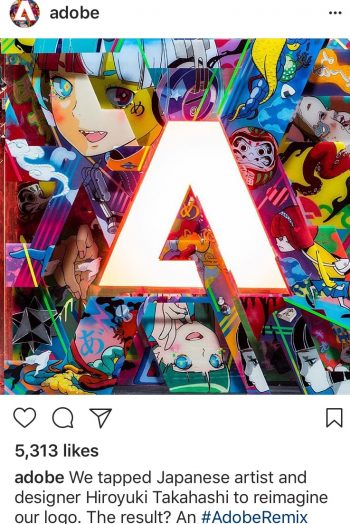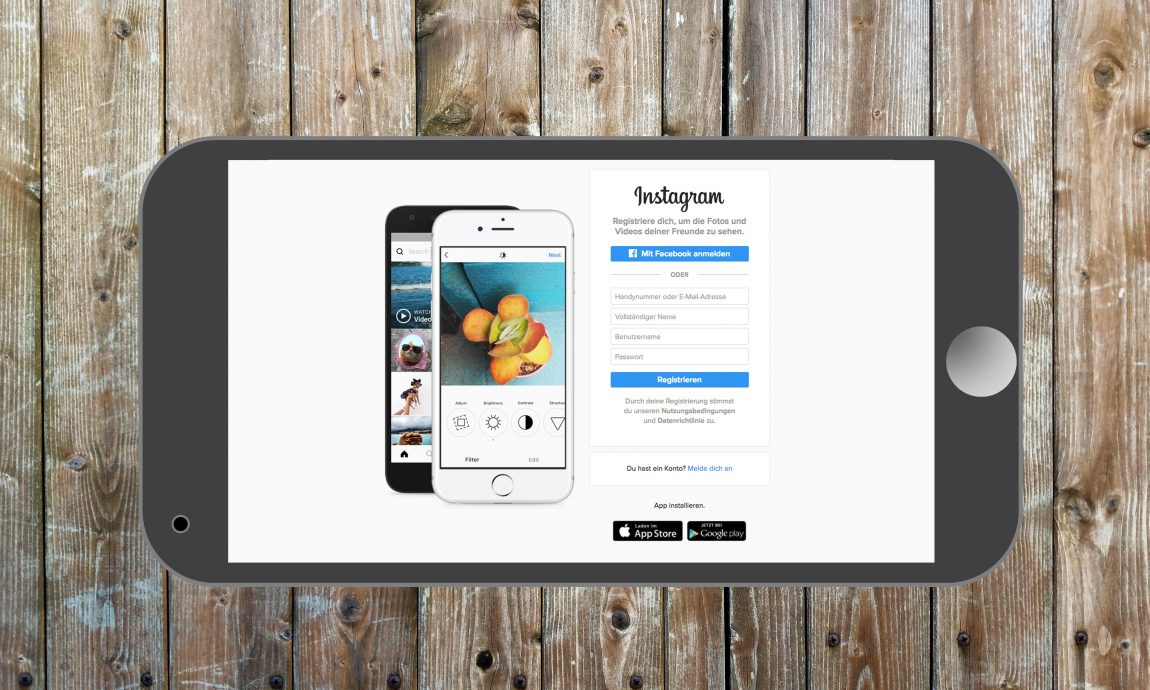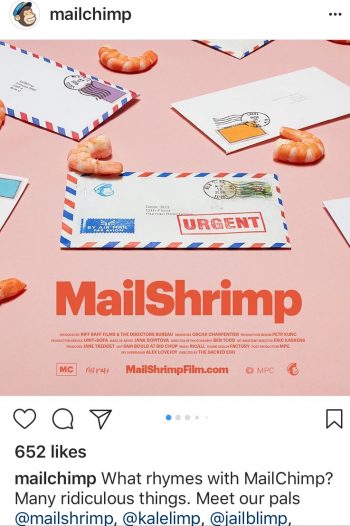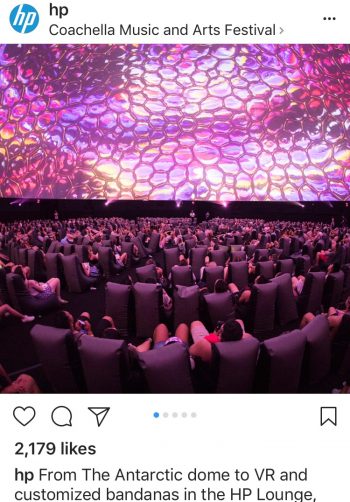5 B2B Instagram Marketing Campaigns That Are Nailing It – And How You Can Too
by Emily Swet
Instagram usually isn’t a first priority for B2B marketing and sales teams – and it’s easy to see why. In a platform teeming with rich visual content, it seems a playing field best suited for B2C brands. Set that skepticism aside, because as we like to remind you, there’s still a human behind your leads, and B2B Instagram marketing campaigns can be incredibly compelling.
To get the ball rolling, think about how you view your B2B brand itself. When you start to view your brand (as well as your buyer personas) as a unique group of people with individual stories, backgrounds, and interests, you can craft a visual message that resonates. And that opens the door for a whole lot of visual opportunity and engagement.
Check Out These B2B Instagram Marketing Campaigns for Inspiration:
1. Maersk Line – Shipping Containers. Angle: Aspiration
Who would have thought a shipping container company could get 64k+ followers? Maersk uses striking travel photos and ship imagery to resonate a narrative of world interconnectedness and communication – that they “move more than cargo.”
2. MailChimp – Email Marketing Service. Angle: Artsy, Irreverent, Anything But Boring.
This small business email marketing service could be a snooze fest. But a well-timed podcast advertisement tapped them into where they wanted to be, and an Instagram sensation was born. As one of their comments reads: “Your campaigns are [thumbs up]. I would use Mailchimp just because it’s fun and artsy.” And that says it all.
3. Fedex – Global Shipping. Angle: Affinity

Fedex is already a household name, so the focus here is instead on sustaining brand affinity. Sending cargo never seemed so lofty or fun – and we see how Fedex is always there, rain or shine, in all corners of this beautiful planet.
4. Adobe – Software. Angle: Product Showcase

This one is a no-brainer. With a product that lends itself to visual design, Adobe can really stretch its content legs – and it does. They emphasize their product capability with a striking display of visuals that inspire designers of all levels to give their products a go.
5. HP – Technology. Angle: Cutting Edge
HP is another brand that doesn’t need to put much effort into brand recognition. Instead, their approach is a cutting edge image. From virtual reality at Coachella, to gorgeously curated product shots, to technology that’s as fashionable as the models holding them, it’s clear HP lives on the edge of what’s hot now – and what’s next.
The time is ripe for your B2B brand to get on board with Instagram, but we advise you to move fast – early adopters have a much easier go at grabbing attention because the space isn’t crowded… yet. Need help developing an Instagram strategy? Drop us a line – we can help you with that.
Continue ReadingB2B Monday Myth: Working With Influencers Is Irrelevant for B2B
by MGB2B
The Myth: Only B2C Brands Can Benefit From Working With Influencers.
The Truth: Influencers May Play a Different Role, But Can Be Equally Valuable for B2B Brands.
When someone says “influencer,” perhaps you the imagine a Kardashian promoting weight-loss tea on Instagram. This type of strategy surely can’t work for your B2B brand, can it? As it turns out, there are a number of strategies to help your business identify proper influencers (even if they aren’t Kardashians) and have them play a beneficial role in advocating for your company. Here’s a quick guide:
What Are Influencers for B2B Brands? And Why Work With Them?
Let’s start out with a definition we can all agree on. An influencer is, simply put, a person who has the power to influence many people via social or traditional media. This comprises everything from bloggers, vloggers, and Instagrammers, to industry analysts, thought leaders, and writers for trade publications.
The relationship between influencer and brand is symbiotic. It’s easy to see why you’d want to work with one: you have a product or service you want to market; influencers have a built-in audience. But influencers have their own brand they need to uphold – themselves. A large part of this image relies upon fresh, relevant content that keeps their followers interested and informed. From simple product mentions to expert interviews, with the right strategy, your brand could be a source of reliable, non-advertorial content that influencers value. Or they may produce it themselves based on what they learn from you. It varies from influencer to influencer.
Keep Your Niche In Mind.
Consider working with micro-influencers, who may not be the most popular, but hold the most knowledge, expertise, and influence within an industry or particular vertical. These are individuals who have probably gained their influence organically over time. They value their audiences enough that they want to provide them with good information. And because of that, they are seen as trustworthy. Your company can work with thought leaders, industry analysts, bloggers, or writers for trade publications. It’s important to note that these micro-influencers are authentic advocates. And while their audience may not be huge, you can bet it’s very interested in the niche. So you’re getting quality over quantity.
What Your Influencer Wants.
Not everyone is motivated by the same incentive. Some will operate for as little as $50 and a gift card. Others get paid in the millions. And everything in between. This person has valuable industry insights. No matter what you offer to pay them, they will not promote a product or service they don’t believe in. After all, they have a reputation and industry cred that they’ve built up over the years. The key is to let them know how you’ll contribute to that credibility and reputation in a positive way. What’s even more important is that you do your due diligence before partnering with someone.
Think Long Term.
Remember that working with an influencer is about building a relationship, which takes time. This is not a one-time transaction. B2B brands usually work with much more complex products, so your influencer needs to have a full understanding of your industry and your products before they begin advocating for you. Before you enter into a partnership, get to know the influencer as well as you can. Invest some time – it will be worth it. And above all, makes sure you communicate openly and authentically, every step of the way.
There are a multitude of ways you can work with an influencer, whether you have them share or collaborate on content, speak at your event, or blog about your product. When you work with micro-influencers within your niche and approach them with a long-term relationship in mind, you set your company up for success.
Continue Reading7 Smart Social Media Moves to Make After Your Next Trade Show
by MGB2B
 If you’re on the marketing team for a manufacturing company, then you are likely smack dab in the middle of trade show season. Coming out of first quarter shows and looking ahead at spring and summer, this is a busy time of year. Besides keeping the details, materials, and deadlines straight, there’s the ongoing challenge of proving the ROI of these events. Let’s face it: between travel, fees, and the booths themselves, trades shows add up quickly. While social media is probably already in your strategy, there’s several smart trade show social media tips for manufacturers that can keep the payoffs rolling in.
If you’re on the marketing team for a manufacturing company, then you are likely smack dab in the middle of trade show season. Coming out of first quarter shows and looking ahead at spring and summer, this is a busy time of year. Besides keeping the details, materials, and deadlines straight, there’s the ongoing challenge of proving the ROI of these events. Let’s face it: between travel, fees, and the booths themselves, trades shows add up quickly. While social media is probably already in your strategy, there’s several smart trade show social media tips for manufacturers that can keep the payoffs rolling in.
Take these 7 Trade Show Social Media Tips for Manufacturers for a spin after your next event:
- Turn your booth visitors into custom audiences. Facebook and Twitter (and soon, LinkedIn) allow social media advertisers to create targeted audiences based on contact information. After your next trade show, don’t just dump your booth visitors into your email database. Use them to build a custom audience. Target your Twitter and Facebook ads at your new contacts. Then, create mirrored audiences made up of users similar to your custom-built audience, and serve social ads to them, too.
- Don’t go cold turkey on event hashtags. If your Automotive Manufacturing trade show was in January but you’re firing out tweets with #AutoMfg2017 in April, it might be time to say sayonara. But a week or more after your trade show ends is still within the unwritten “half life” of an event’s hashtag. Keep conversation circulating, especially when it comes to the products and literature that you had on display. That way, attendees or people who didn’t make it to the show can still be in the know. Which brings us to Tip #3.
- Tell your followers where they can find more information. Trade shows are hectic. It’s easy to miss specific products — even entire booths. Remind your social media followers where they can learn more about the products and services you offer in case they missed it in person. Also, be sure to share your relevant content, everything from white papers to product bulletins. Take advantage of a captive audience and use that hashtag!
- Create Twitter Moments from trade show tweets. Now that Twitter Moments are available to all users (check out more about Moments in this post), why not try your hand at creating one? Find a few tweets from attendees, customers, or other exhibitors, and collect them together in a Moment. This not only can help showcase your company’s unique experience at the show, but also recognize other exhibitors you admired, and act as a summary of interesting sessions.
- Engage with other exhibitors post-show. Like you, other trade show exhibitors are probably flying high after a (hopefully) successful event. Use this window of time to share what you enjoyed about the event with other exhibitors, what you learned, and what you hope to see next year. Remember to use the event’s hashtag, but only for as long as it’s relevant (see Tip #2).
- Upload your photos into an album. One of the key trade show social media tips for manufacturers is to post photos throughout the event. But it’s also smart to collect all of those photos, and ones you’ve didn’t get to post, and create an album. Regardless of your social channel, use the show’s hashtag in the album and photo descriptions as well as your company name wherever possible to boost SEO. An album is a nice way for both your customers and your own employees to see what goes on at trade shows. Believe it or not, showing the personal side of your event or marketing team can go a long way.
- Connect on social media. Before you fly down to the comments section (though please do, we love to hear from you), this is NOT a typo! You’re probably already doing a good job getting content up before, during, and after each event. But if you’re not following, liking, and connecting with the people and companies you engage with, you’re missing out on lots of future engagement opportunities. Social media is still reciprocal, and a follow will often earn a follow back. Take advantage of the post-trade show fervor to help grow your communities on social and you’ll have new faces to engage with all year long.
If you’re one of the 68% of B2B organizations that consider in-person events to be an important piece of your content marketing strategy, you’re not likely to give up trade shows any time soon. Putting these social media tips for manufacturers to work can help fuel your strategy all year long, not to mention generate more ROI. Need a nudge in the right direction? Drop us a line!
Continue Reading



